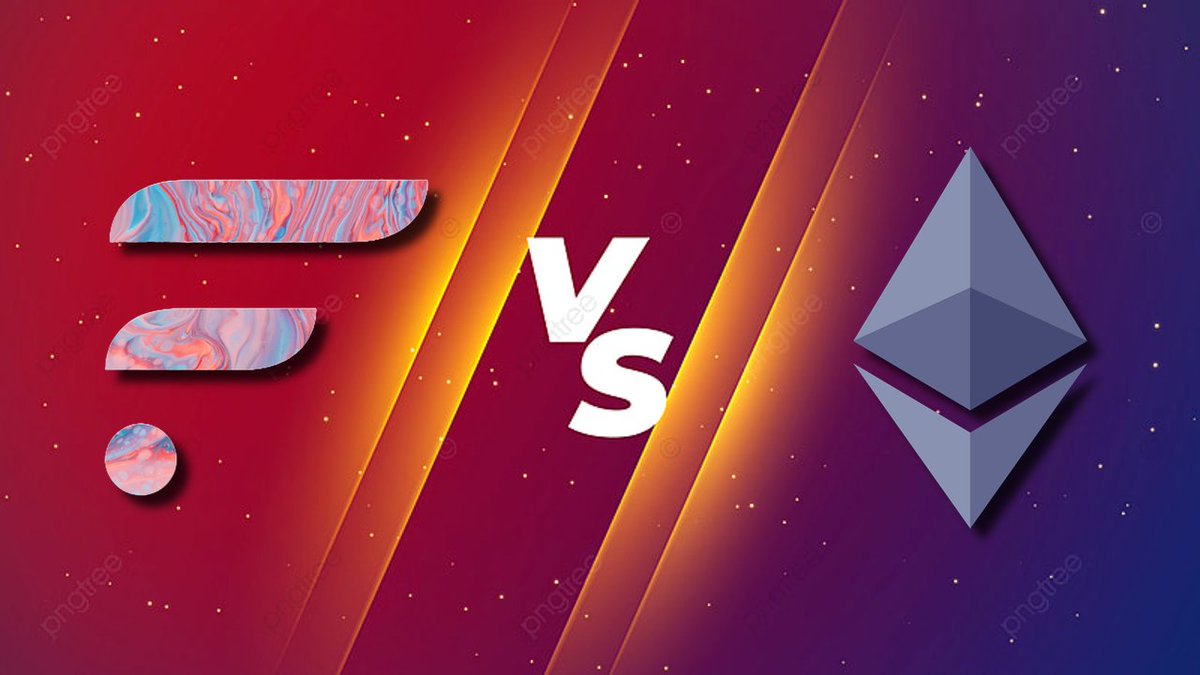
#Flare vs. #Ethereum
I hear many people describing the Flare Network as the 'Ethereum killer'.
But few actually consider why that might be.
Let's look at the facts, $FLR vs $ETH
🧵[THREAD]
I hear many people describing the Flare Network as the 'Ethereum killer'.
But few actually consider why that might be.
Let's look at the facts, $FLR vs $ETH
🧵[THREAD]

Ethereum, once upgraded to 2.0 will reach consensus with Proof-Of-Stake which means the security of the network depends on the price of #ETH.
A fundamental issue with PoS as a consensus algorithm is the inability to scale the fact it remains susceptible to 51% attacks.
2/
A fundamental issue with PoS as a consensus algorithm is the inability to scale the fact it remains susceptible to 51% attacks.
2/
To validate transactions on a PoS network, users must stake their tokens which means validation is based on how many you own.
Now, let us consider if the #Ethereum Network wanted to tokenize Gold (estimated market cap of ~$10T) while ETH market cap was sitting at ~$150B
3/
Now, let us consider if the #Ethereum Network wanted to tokenize Gold (estimated market cap of ~$10T) while ETH market cap was sitting at ~$150B
3/
If a malicious actor had the ambition of taking all of the tokenized Gold off the Ethereum Network (Worth $10T) they would only require 51% of ETH market cap to control the network and do so.
4/
4/
So with around $75B worth of $ETH, the malicious actor could steal $10T worth of assets.
This is why the security of the network depends of the value of the token.
If the price of the native token were to drop significantly, high value assets on the network become at risk.
5/
This is why the security of the network depends of the value of the token.
If the price of the native token were to drop significantly, high value assets on the network become at risk.
5/
Nodes on the Flare Network on the other hand, run the Avalanche consensus protocol with a key adaptation to the Federated Byzantine Agreement consensus topology.
Essentially validating transaction in a similar way to the #XRP Ledger.
6/
Essentially validating transaction in a similar way to the #XRP Ledger.
6/
This essentially removes the dependancy on the price of the native token, increasing the ability to scale and hold more value in the network.
This does not mean ETH is dead, it means that the Flare Network is providing some serious competition as a smart contracts platform.
7/
This does not mean ETH is dead, it means that the Flare Network is providing some serious competition as a smart contracts platform.
7/
The Flare Network integrates the Ethereum Virtual Machine (EVM).
This does not mean it relies on Ethereum.
In contrast, this is an advantage as it allows developers to easily port over their smart contracts to (what I consider) a platform with bigger potential.
This does not mean it relies on Ethereum.
In contrast, this is an advantage as it allows developers to easily port over their smart contracts to (what I consider) a platform with bigger potential.
📺Check out my YouTube channel for the latest updates on the Flare Network!🔥
youtube.com/channel/UCXDch…
youtube.com/channel/UCXDch…
• • •
Missing some Tweet in this thread? You can try to
force a refresh







